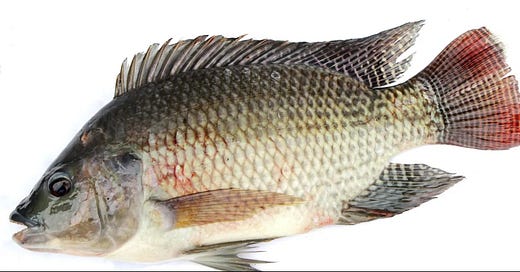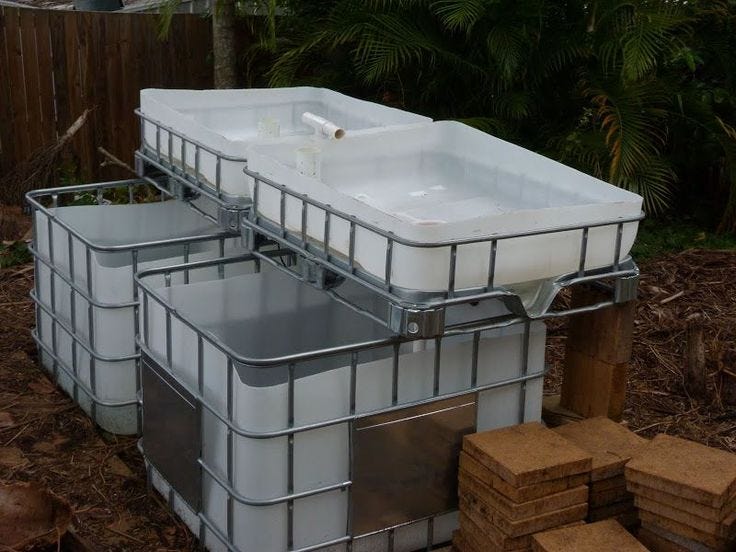Home Tilapia Farming for Sustainable Food Supply
Introduction
In a world marked by increasing concerns about food security and sustainability, home-based tilapia farming has emerged as an attractive option for individuals and families seeking a reliable source of fresh and nutritious protein. Tilapia is a popular choice among aquaculture enthusiasts due to its adaptability, rapid growth rate, and mild taste. This article explores the fundamentals of farming tilapia at home, offering a comprehensive guide to help you establish and maintain a successful home tilapia farm
.
Understanding Tilapia
1.1 Tilapia Species
Tilapia is a diverse group of freshwater fish species, with the Nile tilapia (Oreochromis niloticus) being the most commonly cultivated. Other species such as Mozambique tilapia (Oreochromis mossambicus) and blue tilapia (Oreochromis aureus) are also farmed for their culinary value.
1.2 Tilapia Characteristics
Tilapia are known for their hardiness, adaptability to varying water conditions, and rapid growth. They are herbivorous, primarily feeding on algae and aquatic plants, making them an excellent choice for aquaponics and home farming systems.
Setting Up Your Home Tilapia Farm
2.1 Selecting the Right Location
Choose a suitable location for your tilapia farm, such as a backyard pond, large aquarium, or purpose-built aquaculture tank. Ensure the site receives adequate sunlight and has a stable source of freshwater.
2.2 Aquaculture Tank or Pond
Depending on available space and resources, you can opt for an aquaculture tank or a pond. Tanks are ideal for small-scale indoor farming, while ponds are suitable for larger outdoor setups.
2.3 Water Quality
Maintaining optimal water quality is crucial for tilapia health and growth. Test the water for pH levels, temperature, dissolved oxygen, and ammonia levels regularly. A pH level of 6.5-8.5 and a temperature range of 77-86°F (25-30°C) are generally suitable for tilapia.
2.4 Filtration and Aeration
Install filtration systems and aerators to keep the water clean and oxygenated. Mechanical and biological filtration will help remove waste and maintain water clarity.
Tilapia Breeding and Stocking
3.1 Choosing Broodstock
Select healthy, disease-free adult tilapia as your broodstock. Make sure you have a mix of males and females for breeding purposes.
3.2 Breeding Setup
Create a separate breeding tank or enclosure for your broodstock. Provide suitable nesting sites, such as PVC pipes or clay pots, where tilapia can lay their eggs.
3.3 Reproduction and Fry Care
Tilapia are prolific breeders, and females can lay hundreds of eggs at a time. After hatching, the fry can be kept in separate tanks or a nursery area with controlled water conditions until they reach a suitable size for transfer to the main grow-out tank or pond.
Feeding Your Tilapia
4.1 Tilapia Diet
Tilapia are primarily herbivorous, but they are omnivorous and can also eat small aquatic organisms. Commercial tilapia feed is available, or you can supplement their diet with aquatic plants, duckweed, and kitchen scraps.
4.2 Feeding Schedule
Establish a consistent feeding schedule. Young tilapia may require multiple feedings per day, while adults can be fed once or twice daily. Be mindful not to overfeed, as it can lead to water quality issues.
Water Management
5.1 Water Changes
Regularly replace a portion of the water to maintain water quality. A 10-20% water change every week is a good starting point.
5.2 Monitoring Water Parameters
Continue monitoring water parameters and make adjustments as needed. Proper water management is essential for tilapia health and growth.
Disease Prevention and Management
6.1 Quarantine
Isolate new fish additions in a quarantine tank to prevent disease transmission to your main population.
6.2 Disease Identification
Learn to recognize common tilapia diseases like white spot disease, bacterial infections, and fungal infections. Prompt diagnosis and treatment are essential to minimize losses.
6.3 Biosecurity Measures
Practice good biosecurity by maintaining strict hygiene in your farming environment and minimizing the introduction of potential pathogens.
Harvesting Tilapia
7.1 Growth Timeline
Tilapia typically reach market size (around 1-1.5 pounds or 450-680 grams) in 6-9 months, depending on water temperature and feeding.
7.2 Harvest Method
s
Tilapia can be harvested by hand-netting, seining, or draining the pond or tank. Ensure that the water is chlorinated or treated to euthanize the fish humanely.
Benefits of Home Tilapia Farming
8.1 Sustainable Protein Source
Home tilapia farming provides a sustainable source of protein that reduces the need for overfished wild species.
8.2 Reduced Environmental Impact
Compared to commercial aquaculture operations, home-based farming generally has a smaller environmental footprint, with less water and energy consumption.
8.3 Educational Opportunities
Home tilapia farming can be an educational experience for families, teaching valuable lessons about aquaculture, ecology, and sustainability.
Challenges and Considerations
9.1 Space and Resource Limitations
Limited space and resources may restrict the scale of your home tilapia farm.
9.2 Regulatory Compliance
Check local regulations and permit requirements for aquaculture activities, especially if you plan to sell your tilapia.
Conclusion
Home tilapia farming offers a rewarding and sustainable way to produce fresh, nutritious protein at your doorstep. By following best practices in tilapia care, water management, and disease prevention, you can enjoy the benefits of homegrown fish while contributing to food security and environmental conservation. Whether you're a beginner or an experienced aquaculturist, home tilapia farming can be a fulfilling and practical endeavor that promotes self-sufficiency and healthy living.








